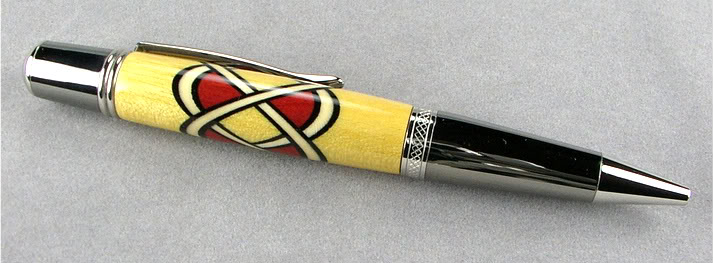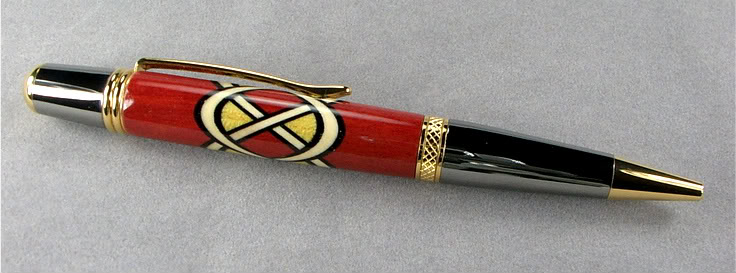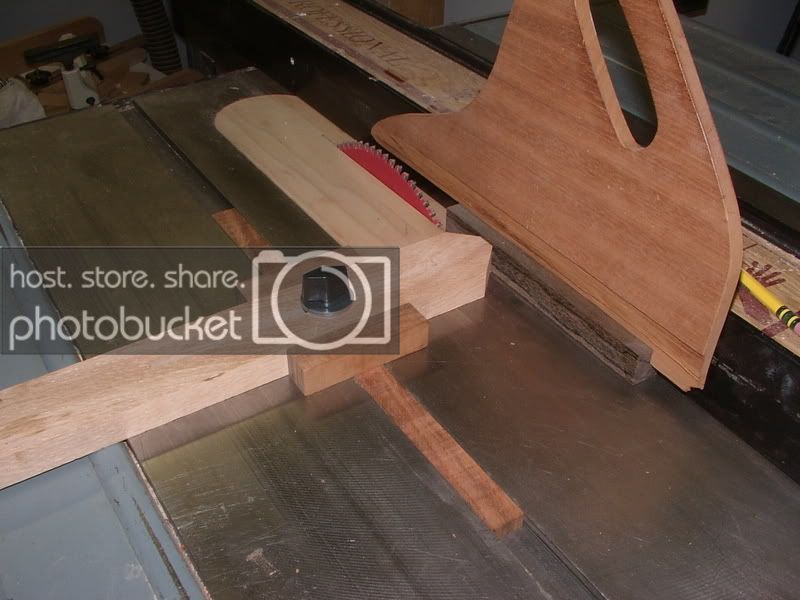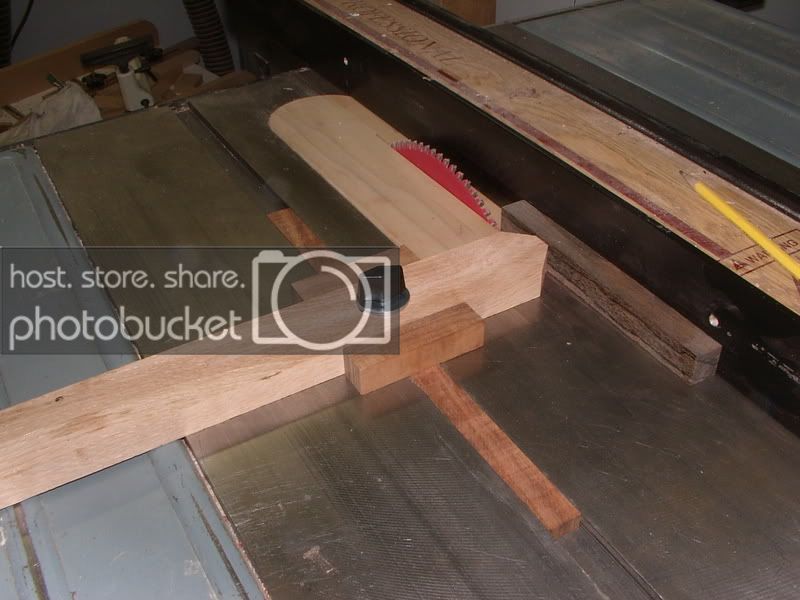NB: Don't do this if you're new to woodworking, not familiar with your TS, don't have a fence which is parallel to the blade OR if it just makes you nervous.
Sometimes, I come across an offcut which looks perfect for an inlay. I'll just use a drill bit to set the width between the fence and blade although usually I can find the sizing rip I've already made.
A small block of wood with the blade's kerf cut into it makes a good Go/No Go gauge. I have one for each of the blades I typically use.
Close is good--not so tight as to require force to insert it and not so loose it just falls out. Air whooshing out when you slide the slice thru is best (at least for me when using Titebond II with multiple woods).
If the blank is 1" square, a 7/8" wide slice works. Thus, IF I have a piece that's long, milled flat and square AND is at least 1-1/2" tall, I'll just rip it with the blade height set to 15/16, pushing it thru the blade with two push sticks: one on top, one to the side.
Then I just cut that slice off with the blade height just over 1/8 and the offcut to the outside of the blade.
If I think about it, I'll place a stop block on the far side of the original positioning for the fence. This makes it feasible to return the fence to its original position. Now, I can take the billet and run it thru the saw again with the remaining rebate down to the table and slice off the rest of the rip, leaving it ready to be made square again.
It takes less time to do than it took to write this explanation.
Safe and easy.
One more thing: when you do it this way, and the rip slides through your gauge--make another to keep. It's your sizing rip for next time. :wink:




